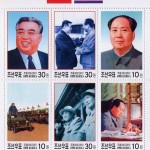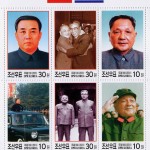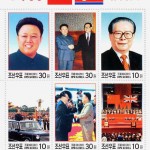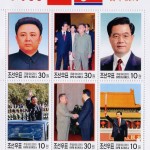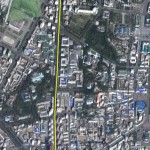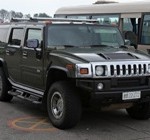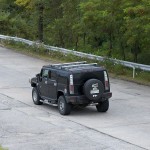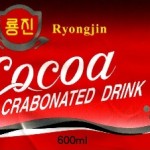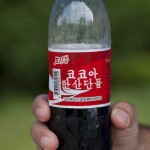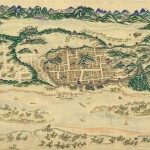Lankov writes in the Asia Times:
In October last year, media worldwide reported that Kim Jong-eun, Kim Jong-il’s third son, had been made a four-star general and promoted to the position of vice chairman of the Korean Workers’ Party’s Central Military Commission.
It was taken as evidence that at long last, the Dear Leader had decided on his successor. At the time, it was often overlooked that Kim Jong-eun had not yet been officially described as “successor”. Officially, he is merely a top dignitary, even though few would cast doubt on the actual meaning of the promotion of a 28-year-old to a top circle of decisions makers whose average age is well above 70.
Over the following year though, the media – at least, the English-language media – have not paid much attention to the succession process underway in the North. This lack of attention is easy toexplain. The media usually report unusual developments while the North Korean dynastic succession has so far progressed without many surprises.
It seems that North Korea’s decision makers do not want to be too creative. So far, they have generally followed the script which was developed 40 years ago, in the 1970s, when Kim Jong-il was promoted to succeed his father, Kim Il-sung.
From late 2010, Kim Jong-eun began to appear in the pages of the North Korean press and in news broadcasts on North Korean television. He is shown mimicking the public activities of his father (and earlier activities of his grandfather). Kim Jong-eun goes to factories where he explains to the managers how they should run their enterprises and extols workers to labor with even greater enthusiasm.
He is shown touring newly built apartments and inspecting military units, providing artists with moral guidance and mixing with exemplary soldiers.
At least in one case, such a visit was commemorated in stone. In 2009, Kim Jong-eun, then still unknown to most, accompanied his father on a visit to Wonsan Agricultural College. Soon afterwards, a commemorative stone feature was erected to celebrate this great historical event.
One should not be too surprised about this, the present author, when walking through Pyongyang, once came across a wooden bench that was fenced off and had a large commemorative stone placed next to it. The bench’s claim to fame was that in the 1950s, Kim Il-sung, founder of the dynasty, had once placed his buttocks on its wooden planks. Until this year though, such commemorative stones could only mark the activities of the two elder Kims. Now it seems that the successor has joined the top league.
Kim Jong-eun has been introduced to foreign embassies in Pyongyang and now frequently meets with visiting foreign officials and delegations. Recently, during a meeting with a Chinese dignitary, he was pictured sitting on the right hand side of the guest while his father, Marshal Kim Jong-il, sat on the left.
Jong-eun’s attire is worth noting. He wears a navy blue Mao Zedong suit. This dress is rather anachronistic, but it clearly has been chosen for its symbolism: his grandfather wore exactly the same daily uniform in the 1950s and 1960s. Kim Jong-eun resembles his grandfather indeed, and the likeness is further emphasized by his choice of haircut. This exercise in political image-making delivers a clear message: Kim Jong-eun is the next incarnation of his grandfather, the legitimate heir to the Kim dynasty.
Kim Jong-eun’s connection with his still-ruling father is also emphasized in clothing selection. In winter, he appears clad in a grey parka that is an exact copy of Kim Jong-il’s winter dress. In other words, the successor is made to look like a young clone of his two predecessors.
One should probably not overstate the significance of these facts too much, but nonetheless, this does not encourage the idea that Kim Jong-eun will break with the current line and become a radical reformer.
Every ruler of the Kim family has had his own, clearly defined, set of titles. Nowadays Kim Il-sung is usually referred to as the “Leader” (suryong in Korean) and Kim Jong-il is usually referred to as the “General” (changun). Kim Jong-eun, unremarkably, has also acquired a title: he supposed to be referred to as the “Four-star General” (taejang) – in Korean, this is a technical term for a military rank, different from the generic “General”, which is Kim Jong-il’s title.
Recently, North Koreans saw the emergence of a new type of personality cult-related object: three plaques or stones, identical in size and shape, each containing a short three character inscription. Such triple plaques or stones are increasingly common in public places in North Korea.
One plaque says “The blessing [of having] the leader”, the next says “The blessing [of having] the general”, while the last one says “The blessing [of having] the four-star general.” As we remember, “Leader” means Kim Il-sung, “General” stands for Kim Jong-il, and the “four-star General” is Jong-eun’s new sobriquet.
This is a way to remind North Koreans how incredibly lucky they are to be blessed by destiny, which has provided them with three geniuses of leadership, the three best leaders the world has ever seen.
As one should expect, the arts have been put to good political use as well. For the past few years, North Koreans have been encouraged to sing a song entitled Footsteps. It extols the manifold virtues of Jong-eun and especially his desire to be among the common people and take care of their needs.
Ko Yong-hui, Jong-eun’s late mother, has also begun to get her fair share of attention. Back in the 1970s, Kim Jong-il’s rise to power gave birth to personality cult for his mother, Kim Jong-suk. Jong-eun’s mother was a beautiful folk dancer who died in 2004. Nowadays she is supposed to be referred to as “Pyongyang’s mother”. Predictably, there is at least one song dedicated to her virtues and glory.
The city of Wonsan seemingly has started somewhat special standing in North Korea. Jong-eun’s mother was actually born in Japan, but she moved to North Korea with a large number of pro-Pyongyang ethnic Koreans. The major port of arrival for these people was Wonsan and it has been stated that Jong-eun described this city as “his second home town”.
According to some rumors, he was actually born in one of the Kim Jong-il’s residences in Wonsan or close by, but it is not currently clear whether these rumors should be taken seriously. Nonetheless, Wonsan is clearly a rising star of North Korea’s political geography.
What does this all mean? So far it seems that North Korea’s agitprop department is following the pattern that was developed in the 1970s. Then, they spent a few years on promoting the personality cult of the newly appointed successor whose virtues and devotion to the people were continuously extolled.
A significant part of this propaganda appeared in confidential publications that were not supposed to be seen by outsiders and often not even by common North Koreans as well. This allowed them to claim that the North Korean public suddenly experienced a burst of spontaneous love for young Kim Jong-il. His official confirmation as his father’s successor was presented as merely the corollary of this universal love and admiration.
In the case of Kim Jong-il, these preparations took eight years. Kim Jong-il was selected as successor and promoted to top positions in the government in 1972, but his standing as heir-designate remained unofficial until 1980. In 1980, the sixth congress of the Korean Workers’ Party officially declared Kim Jong-il to be the official successor of Kim Il-sung.
Recent events, especially the speedy emergence of Jong-eun’s personality cult, leaves little doubt that the decision pertaining to his future has been made and is unlikely to be changed. However, he is yet to be declared a successor, officially and unequivocally. Technically speaking, he is merely one of a dozen top military commanders, albeit very young and enjoying unparalleled admiration among the common people.
If the experiences of the 1970s are a guide as to what is likely to happen, we should expect that in due time Jong-eun’s standing will be made official. Judging by the hype North Korean propaganda makes about 2012 (meant to be a year of great events and achievements), one cannot rule out that the final promotion will happen as soon as next year – perhaps, but not necessarily, at a party congress which will be convened for this purposes.
There is one noticeable difference between Kim Jong-il’s promotion in the 1970s and Kim Jong-eun’s promotion of late. In the case of Jong-eun, North Korean agitprop has moved much faster, so it may be possible that the entire preparatory phase be compressed into two or three years.
They have a good reason to be in a hurry. Kim Il-sung was 60 when he made a decision about his son, Kim Jong-il made the same decision at the age of 68, whilst being in far worse physical shape. So nobody knows how much time North Korea has to complete the tricky dynastic succession.
At any rate, things appear to be moving smoothly right now. The succession process has yet to run into any noticeable obstacles. So the chances are that the world’s youngest four-star general will succeed Marshal Kim Jong-il, becoming the third Kim to rule the world’s only communist absolute monarchy.
Read the full story here:
The rise of Kim Il-sung’s mini-me
Asia Times
Andrei Lankov
2011-11-8

